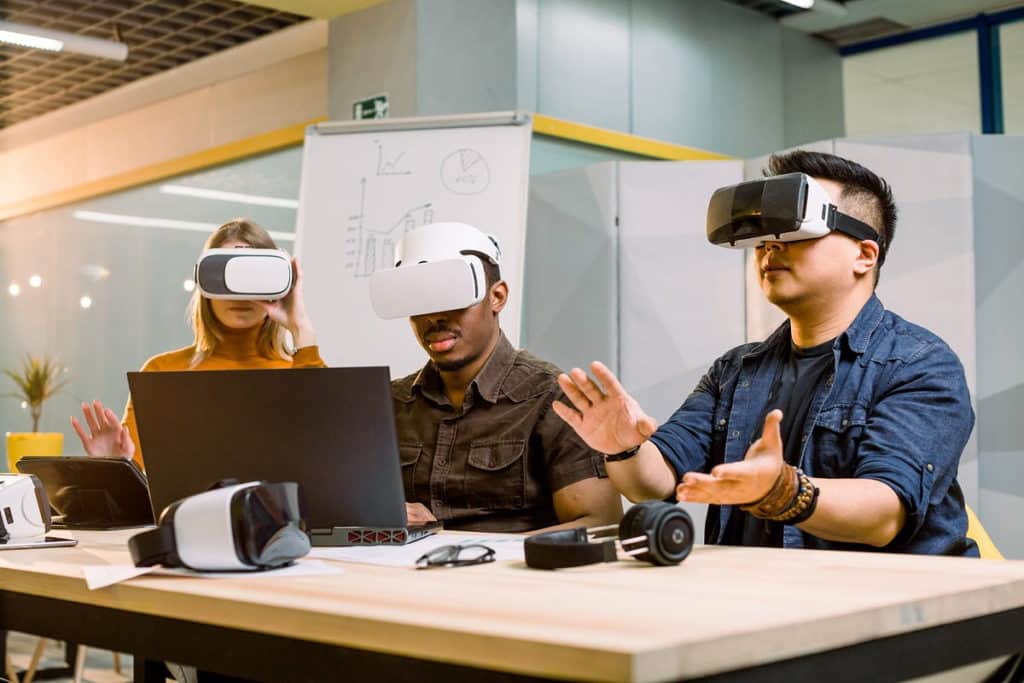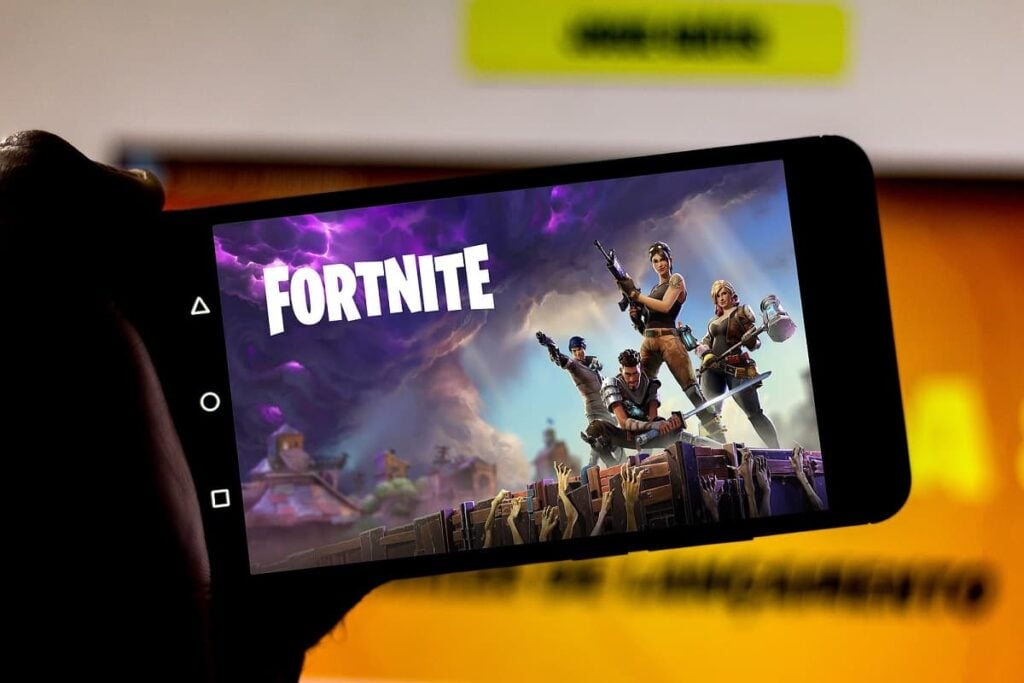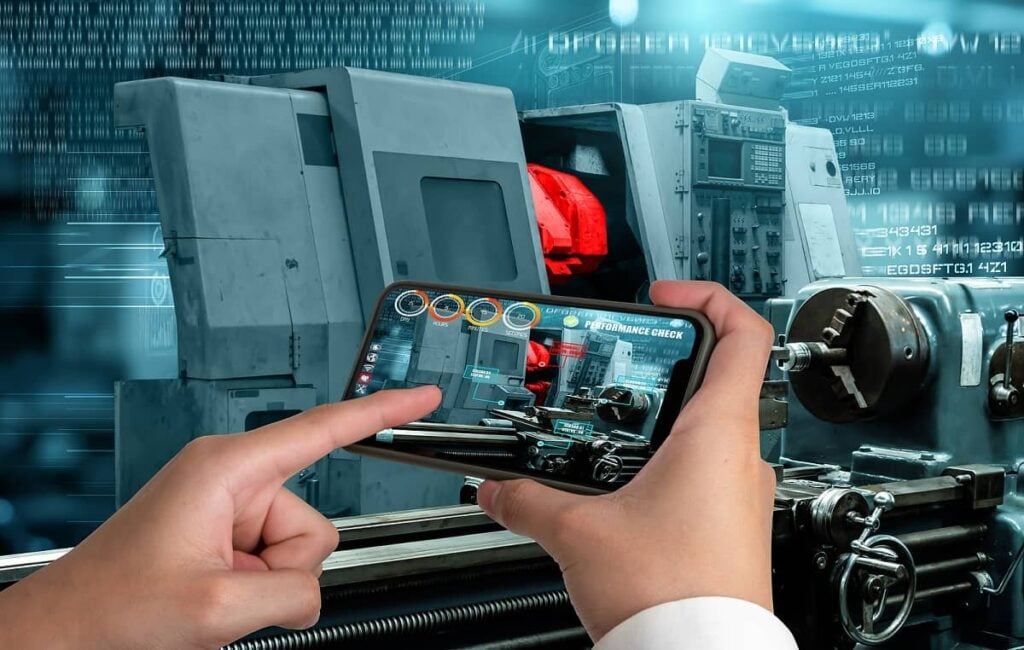Virtual Collaboration in the Workplace Using 3D Data
Table of contents

While most of the world (well, those who shower in the morning before cursing their fellow office commuters but now work in their underwear until 3 pm) adjusts to the concept of remote work, we at Nanalyze are kind of pros. That’s because we pretty much work wherever we can get a WiFi signal, from the Alaskan hinterland to tech-savvy Eastern Europe. The current pandemic has thrown a particular spotlight on how homebound workforces can still collaborate, with video teleconferencing company Zoom (ZM) becoming the literal face of the so-called new normal. This moment would also seem to be made for the broader adoption of virtual collaboration in the workplace using VR/AR and other mixed reality technologies.
Business Case for Virtual Collaboration in the Workplace
The business case for AR/VR virtual collaboration has been steadily building for the last couple of years, especially as the consumer side of the industry remains stuck in the doldrums. Last year, VentureBeat made the argument that enterprises using AR/VR are already seeing returns on their investments. Smartglasses-maker DAQRI, for example, said that its technology helped clients cut troubleshooting time by 60% and often eliminated the cost of sending a technician on a site visit. Where Walmart isn’t automating jobs away, it has turned to VR companies like Strivr to boost training for 70% of its associates. Aerospace pioneer Bell developed a new bad-ass helicopter using virtual reality in just six months, compared to the standard five-to-seven-year timeline.
We recently noted that data visualization in different 3D environments like AR/VR is also becoming increasingly common. The ability to manipulate data out of thin air is more than just the fulfillment of some sci-fi wet dream born from movies like Minority Report. It has the potential to uncover trends and patterns hidden by a flat two-dimensional world. And since two heads are better than one, the additional ability to deliver that data to multiple users in real time becomes exponentially more valuable for everything from engineering and design to training and troubleshooting.
Investing in Immersive Technology
That brings us to a little London-based startup called Masters of Pie. Founded in 2011 by a couple of Sicilian pizza masters 3D artists and designers, Masters of Pie has taken in $6.4 million across a couple of Seed rounds. The most recent was in January 2020 when the outfit raised about $4.4 million from the German engineering and technology company Bosch, along with a couple of UK-based investment firms.
One of the principals at Downing Ventures, Michael Tefula, wrote a Medium post about the rationale behind his firm’s investment in the relatively unknown startup. The Oxford graduate said that immersive technologies – a catch-all category for virtual, augmented, and mixed reality technologies – will be the next wave of the computing revolution.
“If immersive is going to take off in the way that PCs, the web, and smartphones did, it will also need many layers of enabling technologies and this is where lots of work is happening at the moment.”
Michael Tefula, Downing Ventures
Getting Radical with Virtual Collaboration
Found among those layers is Masters of Pie, which has created a software development kit (SDK) called Radical that enables companies to pull live data into a VR or AR environment for virtual collaboration among multiple users. In other words, the startup’s software can turn complex 2D data into a 3D visualization in an immersive environment without developers having to write a ton of new code to make it happen in their legacy enterprise software (that would probably crash anyway).

The alternative to something like Radical is to manually export and time-consumingly reformat the data before importing the new product into some type of third-party standalone collaboration package, according to co-founder and CEO Karl Maddix in a blog post. He goes on to explain:
“Radical is integrated directly into the host software, ‘grabbing’ the original data at source, before efficiently pushing it into a real-time environment, which users can join using their choice of device (VR, AR, desktop, browser, or mobile) for instant and intuitive collaboration. End-to-end encryption ensures that even the most sensitive data can be confidently shared across remote locations.”
Masters of Pie CEO Karl Maddix
Of course, a lot of the heavy lifting, or rendering, happens in a cloud-based environment so there’s no lag on the devices receiving the stream of data. Maddix wrote that 5G networks will open up the potential to stream on immersive devices like AR and VR remotely, though Radical already boasts a frame rate that current 4G networks and WiFi can support through mobile devices like smartphones. “Once you have your live 3D data flowing freely between users and delivered in real-time to a range of immersive devices, you have the fundamentals of true collaboration,” he said.

The company also recently introduced a tool called the PowerCube for VR applications. You may remember reading Lord of the Flies in high school? It’s a story about a bunch of juvenile delinquents who vie for power on a deserted island, and it was the inspiration (we assume) for the reality television show Survivor. The boys’ brave new society adopts the idea that whenever someone holds a special conch, he can speak without interruption until it is passed to someone else. That’s sort of the theory behind the PowerCube, which basically imbues the presenter with admin rights for controlling meetings. (It just goes to show you that no matter how much we democratize technology solutions, you still need a dictator to make it work efficiently.)
Use Cases for Virtual Collaboration
Radical is reportedly already being used by more than 250 global engineering professionals across numerous sectors including aerospace, aviation, defense, automotive, consumer goods, and manufacturing.
The initial use cases were focused on computer-aided design (CAD) software such as Siemens NX, which is a high-end CAD platform that reportedly has more than one million users. It’s no accident that Siemens (SIE) is also one of the startup’s biggest clients and partners. Other big-name clients include Bosch, Nvidia (NVDA), and Rolls Royce (RR). So, obviously, some serious manufacturers see value in virtual collaboration tools to manipulate and share 3D data. Certainly, an SDK like Radical will enable the use of digital twins in immersive environments like VR and AR.
In his blog, Maddix imagines a few other use cases. He goes pretty big in his first scenario:
“Factory workers will have the ability to ‘dial an expert’ directly from a virtual panel on the smart factory device. This offsite expert will appear as a holographic colleague and bring with them live 3D data for that individual machine. Both users will have real-time IIoT data overlaid intuitively on the fully interactive 3D model to facilitate a more effective diagnosis/maintenance process.”
Masters of Pie CEO Karl Maddix

A slightly less futuristic case envisions factory workers on an assembly using holographic video guides in an AR environment to construct complex products more efficiently and accurately. A similar approach could be used to help train employees, as Radical provides users the ability to record a session with voice, movements, model interactions, and even markups.
Conclusion
You probably get the idea by now: Virtual collaboration promises to make the workplace – whether we’re talking about the factory floor or the proverbial drawing room – faster and better. That means something like a multi-million-dollar helicopter can be designed and built at a fraction of the time and cost because of the savings in R&D alone. Combined with automation technologies using artificial intelligence, the potential for immersive tech to help power industry 4.0 is becoming closer to reality – one layer at a time.
Sign up to our newsletter to get more of our great research delivered straight to your inbox!
Nanalyze Weekly includes useful insights written by our team of underpaid MBAs, research on new disruptive technology stocks flying under the radar, and summaries of our recent research. Always 100% free.















